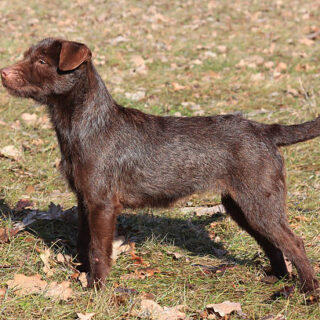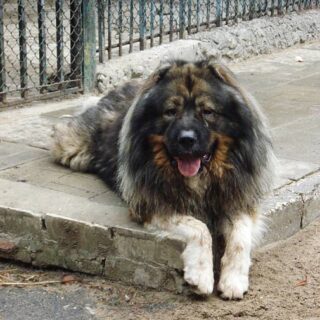Your cart is currently empty!

Single Product
Pug dog breed
Pug Pug is among the most popular dog breeds in the world. They fall into the small dog breed category and are more commonly identified as lap dogs as they can easily fit in your lap and love snuggling you. Pugs make for great first time pets and are through and through family dogs. Their…
Description
Pug
Pug is among the most popular dog breeds in the world. They fall into the small dog breed category and are more commonly identified as lap dogs as they can easily fit in your lap and love snuggling you. Pugs make for great first time pets and are through and through family dogs. Their size also makes them easily adaptable in apartments. These dogs have a playful nature and are absolute charmers. Pugs have a well proportionate body and a black snout. Their floppy ears sit on their heads and reach their eyes. They have a short double coat that feels smooth but sheds a lot.
Pug dogs have a calm and friendly temperament. They are known for their mischievous nature. They love having fun and playing with the family members they are bred in. The Pug dog breed is highly intelligent but not noisy. They only bark when necessary, otherwise they will go about doing whatever it is that they were. Pugs are active and have high energy levels. They adapt well in regions that are neither too hot nor too cold. They exhibit strong loyal tendencies and are very attached to the people they know or live with.
It is not generally known that the Pug was the most popular of all dogs in England and the Continent many years ago. It is generally accepted that the Pug originated in China and made its way to England through Holland.
With the introduction of other toy dogs, the Pug began to lose its popularity in England and there was a danger at one time that the breed would become extinct but more stock was introduced from Holland and Austria in the reign of George III, and this gave the breed a new lease of life. The breed in Australia has been kept going by imports from England at different times.
Key Specifications of Pug Dog
-
Weight
– A healthy Pug weighs between 6 to 8 kgs.
-
Height
– An adult Pug could stand anywhere between 10-13 inches.
-
Lifespan
– A Pugs average lifespan is 13-15 years.
-
Coat
– They have a short and smooth double coat that is easy to groom.
Characteristics and Behavioural Traits pug
- Pugs get along well with children, cats and seniors as well.
- They are easy to train because of their playful nature.
- They are extremely loyal and close to their owners.
- Pugs are goofy, happy and affectionate canines.
- They do not have exercise needs.
Physical appearance
Pugs are often associated with the saying multum in parvo which means a lot in a little. This stands true because even though these dogs are small, they are fairly muscular and have a square frame. Pug dogs have large heads, round faces with lots of folds and wrinkles on their forehead and cheeks. They also have a distinctly seen thumb mark on their foreheads. They are flat-faced, meaning they have flat noses and mouths. A Pug dogs tongue is too large to stay in its mouth and therefore hangs out giving a goofy expression. They have large round eyes, often dark in colour. Pugs ears are classified into 2 categories based on their shapes – rose and button. Rose ears have folded edges towards the head of the Pug whereas button ears are set higher on the set. They have short tails that curl tightly on their hips. A pugs coat is soft and comes in 2 colours –
- Black
- Fawn
Their coats do not have any specific markings except for a particular sable pattern. The fur is equally distributed all over the dogs body with no particular part having thick fur on it. Pugs legs are strong and straight. If you want to adopt a purebred pug or want to know how to identify one, here are some of its classic characteristics –
- If a Pug looks lean with thin legs, it is not a purebred Pug. Purebred pugs have thick, strong legs and have mass on their bodies.
- Purebred Pugs have deep wrinkles on their face.
- They also have moles on their cheeks.
- Their coat comes in 2 colours only. If you see a Pug whose coat is any colour other than black or fawn, it is not purebred.
Behaviour
A pugs temperament is always friendly and cheerful. They make great companion dogs and love being by their owners side all the time. They wouldnt mind sitting on your laps while you work on your laptops and will also jump on your bed to lie down beside you. Pugs also tend to get sad and lonely when you do not pay attention to them or leave them alone for long periods. You should not put up your pug for aggressive activities like hunting, guarding and retrieving. These dogs are not built for such activities. Instead, you can play games with them that do not involve too much exertion. The pug dog breeds is gentle around kids and they also get along well with seniors. These dogs do not bark unnecessarily but will not shy away from drawing your attention to something they dont feel right. If not engaging in any activity, pugs spend time napping!
Care requirements for Pug Dog Breed
Heres more information on Pugs that you should know if you are thinking of adopting one:
-
Health
Pugs are prone to developing a few hereditary diseases and as a pug owner you should be aware of them. These dogs are prone to being epileptic and allergic. They also are known to develop patellar luxation, hip dysplasia and hemivertebrae (meaning misshapen vertebrae). There are certain skin disorders also that pugs are susceptible to like staph infections, demodectic mange or yeast infections. Pug Dog Encephalitis (PDE) is one such disease that does not have any cure. In this disease, pugs experience seizures, become blind, slip into a coma and pass away. Since these dogs are flat-faced, they also experience breathing problems and it is strongly advised not to exert your pugs too much. They are also prone to developing eye problems like corneal ulcers, dry eye and proptosis.
-
Grooming
Grooming your pug dog is not a difficult task. The only thing that might worry you about your pugs coat is how heavily it sheds. You will find your pets fur on your furniture and clothes, especially during summer. There is no high maintenance grooming required for a pugs coat. You have to brush its coat once a week to collect dead fur and regulate the equal distribution of skin oils. It is advisable you bathe your pug once a month thoroughly. The bathing schedule also depends on how frequently dirty your pug gets. To ensure cleanliness and hygiene, it is recommended that you use a damp cloth to clean your pugs coat and especially its face to avoid the risk of skin infections. You must also trim your pugs nails regularly and brush its teeth every day.
-
Exercise
A Pug does not need high energy exercises. An hour’s worth of physical activity is enough for Pugs. You could take your dog for walks in the morning or in the evening when it isnt too sunny. You can also give them puzzle games to keep them occupied mentally.
-
Nutrition
You can feed your pug two nutritionally balanced meals every day. It is advisable to talk to the vet to determine the exact quantity of the food you feed your dog because the quantity also depends on your dogs age, life stage and activity level. You cannot be generous with treats with pug dogs because they are very likely to gain weight faster which could tip them on the obese side of the scales. It is strictly advised against feeding table scraps to pugs no matter how pleadingly they look at you.
-
Training
Pugs are obedient and eager to please their owners, making it easier for you to train them. You can use their daily food for training purposes. Pugs do not react well to strict or harsh correction methods. They are likely to not participate in training if you do so. It is also advisable to introduce your pug to new people and places from the puppy stage to get it acquainted from an early age.
History of Pug
The Pug dog breed is one of the oldest breeds in the world whose ancestry dates back to 400 B.C. Pugs origin can be traced back to China where flat-faced dogs were popular among kings and rulers. Given the long history of these dogs, they have known by several names in the past like Lo-sze, Mopsi and Doguillo among others. These dogs were also given as gifts to visitors who were not from East. Dutch traders took this breed to Europe in 1500s and early 1600s and here, too, their popularity quickly spread. Pugs were also very popular in the Victorian era and their pictures were found on postcards, in paintings and even figurines. In 1860, when the English took over the Chinese Imperial Palace, they discovered many pugs and began breeding them to improve the breed. After the Civil War, pugs found their way to the United States.





